Keeping things local: Subpopulation Nb and Ne in a stream network with partial barriers to fish migration
- PMID: 28352295
- PMCID: PMC5367083
- DOI: 10.1111/eva.12454
Keeping things local: Subpopulation Nb and Ne in a stream network with partial barriers to fish migration
Abstract
For organisms with overlapping generations that occur in metapopulations, uncertainty remains regarding the spatiotemporal scale of inference of estimates of the effective number of breeders (N^b) and whether these estimates can be used to predict generational Ne. We conducted a series of tests of the spatiotemporal scale of inference of estimates of Nb in nine consecutive cohorts within a long-term study of brook trout (Salvelinus fontinalis). We also tested a recently developed approach to estimate generational Ne from N^b and compared this to an alternative approach for estimating N^e that also accounts for age structure. Multiple lines of evidence were consistent with N^b corresponding to the local (subpopulation) spatial scale and the cohort-specific temporal scale. We found that at least four consecutive cohort-specific estimates of N^b were necessary to obtain reliable estimates of harmonic mean N^b for a subpopulation. Generational N^e derived from cohort-specific N^b was within 7%-50% of an alternative approach to obtain N^e, suggesting some population specificity for concordance between approaches. Our results regarding the spatiotemporal scale of inference for Nb should apply broadly to many taxa that exhibit overlapping generations and metapopulation structure and point to promising avenues for using cohort-specific N^b for local-scale genetic monitoring.
Keywords: brook trout; effective number of breeders; effective population size; linkage disequilibrium; metapopulation; salmonid; stream fishes; temporal estimator.
Figures
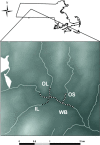


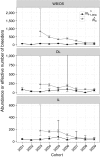
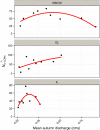
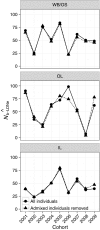

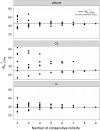

References
-
- Allendorf, F. W. , & Phelps, S. R. (1981). Use of allelic frequencies to describe population structure. Canadian Journal of Fisheries and Aquatic Sciences, 38, 1507–1514.
-
- Anderson, E. C. , & Dunham, K. K. (2008). The influence of family groups on inferences made with the program Structure. Molecular Ecology Resources, 8(6), 1219–1229. - PubMed
-
- Annett, B. , Gerlach, G. , King, T. L. , & Whiteley, A. R. (2012). Conservation genetics of remnant coastal brook trout populations at the southern limit of their distribution: Population structure and effects of stocking. Transactions of the American Fisheries Society, 141, 1399–1410.
-
- Bassar, R. D. , Letcher, B. H. , Nislow, K. H. , & Whiteley, A. R. (2016). Hanges in seasonal climate outpace compensatory density‐dependence in eastern brook trout. Global Change Biology, 22(2), 577–593. - PubMed
-
- Caswell, H. (2001). Matrix population models: Construction, analysis, and interpretation. Sunderland, MA: Sinauer Associates.
Associated data
LinkOut - more resources
Full Text Sources
Other Literature Sources

